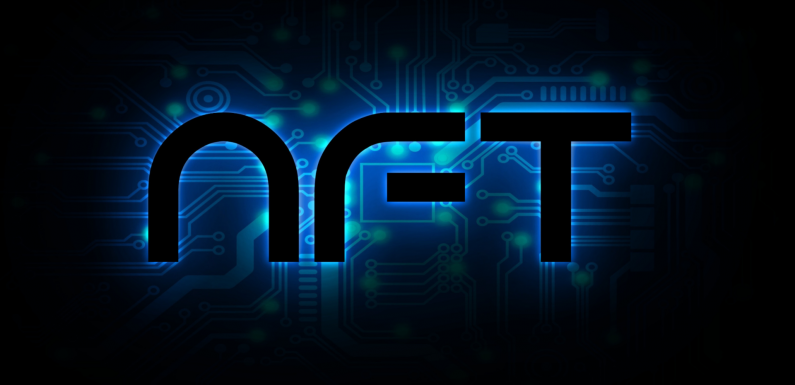
NFTs, or non-fungible tokens, are the new craze in crypto. These tokens are unique in that they are not just numbers. Unlike bitcoin, which has 21 million tokens, NFTs can be created over and over-so long as they conform to certain parameters. Different NFTs have different properties, such as scarcity, copyright, or provenance. As new tokens are created, their value increases, creating an entirely new market for crypto.
No one can replicate NFTs since they are cryptographic tokens uniquely existing on a blockchain. The definition of NFT is a token that represents some digital or physical real-world asset, which can be represented by computer code. NFT can be reviewed as a smart contract with its own Ether address.
Using natural language processing (NLP), known as AI, NFTs can be programmed to represent items in the real world like real estate and artwork. The potential applications for this technology are seemingly endless, and while there is still work to be done, NFTs represent a new language to express value.
Non-fungible token (NFT) is a crypto asset representing a unique object, such as NFT Diamonds, a video game character, or collectible baseball cards. These assets can be traded, used on a blockchain network, or exchanged using a decentralized marketplace or application. Crypto Kitties is the most prominent and successful example of an NFT, although Ethereum is not exclusive to NFTs.
Understanding NFTs
NFTs, or non-fungible tokens, are one of the most hotly debated topics in the cryptocurrency space. A lot of investors are happy (or at least thrilled) to speculatively assess the price of the underlying asset, betting that the value would soar due to the widespread interest in the technology’s concept.
NFTs are a relatively new technology, similar to other blockchain technologies, such as Bitcoin and Ethereum. NFTs, or digital tokens, are smart assets in Ethereum. They are the only smart asset in Ethereum, which means they are literally programmable, like Ethereum smart contracts.
When you understand NFTs, you’ll notice that the technology behind NFTs is easy to understand and apply to virtually any use case. These digital currencies work with smart contracts, which enable the creation of non-fungible tokens that are unique, divisible, storable (or “fungible”), and transferable. NFTs are essentially digital collectibles, and they can represent anything from movie tickets to comic books.
Why Are Non-Fungible Tokens Important?
Non-fungible tokens (NFTs) are a type of cryptographic token managed by smart contracts on the blockchain. The token is a digital asset that retains its value. While fungible tokens are similar to each other, NFTs only exist on the blockchain, so each token is unique.
In crypto, non-fungible tokens (NFTs) are tokens that cannot be divided, multiplied, or altered upon creation. These tokens are symbols that represent unique digital assets. These include crypto collectibles (ERC721 tokens) and non-fungible tokens that act as digital real estate (ERC721 tokens built on the Ethereum blockchain).
Cryptocurrency has almost become synonymous with Bitcoin, but anyone familiar with blockchain technology understands that the cryptocurrency space is far broader than just Bitcoin. Blockchain is a distributed, decentralized, public ledger of transactions, and non-fungible tokens (NFTs) are one of the applications of blockchain technology.
Here Are Some Examples of Non-Fungible Tokens.
An NFT or non-fungible token can represent assets digitally, including digital artwork and real estate. It happens to be particularly popular for representing digital artwork, as they allow artists to prove ownership and authenticity of their work. The interesting part is, they can even Test which NFTs are the most appealing to 100 real consumers within two hours prior to investing in the launch of a new NFT. This helps the artist to ensure that their work will be well-received by the market prior to investing time and effort into launching it.
Other than artwork and real estate, you can also invest in tokenized collectible cars such as the ferrari f12tdf, which can be considered a digital asset. Tokenization of rare vehicles can help to maintain or increase the value of a car, specifically in the case of a classic car as well as keep it in a safe location without having to be moved.
It’s no surprise that DApps-decentralized apps-have become incredibly popular in the past few years. However, one of the biggest challenges they present is to ensure the integrity of both data and transactions. Since digital tokens are physically not tied to anything in nature, decentralized apps rely on non-fungible tokens (NFTs) to track and validate transactions.
How Can I Buy NFTs?
NFTs-or non-fungible tokens-have become the latest buzzword in cryptocurrency, and major exchanges like Coinbase and Binance now offer trading pairs for NFTs. While digital currency is essentially any digital token that doesn’t have a set, known value, most NFTs are utility tokens. These tokens serve the purpose of giving users access to a service or network. It allows users to send assets or values from one user to another without a central authority, like a bank.
